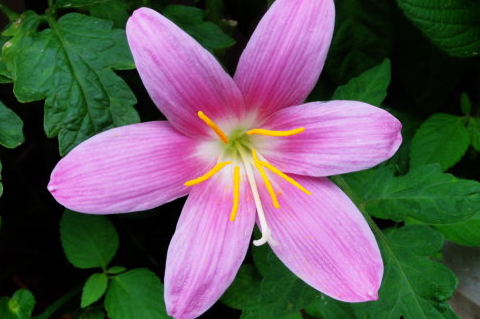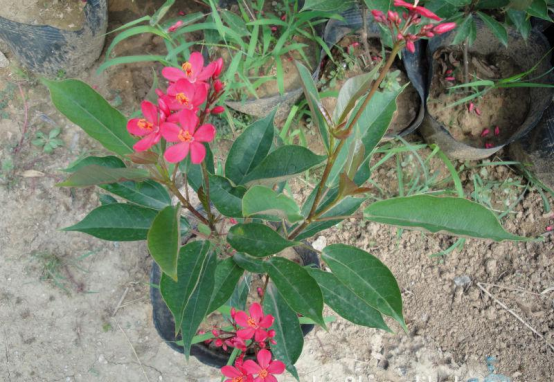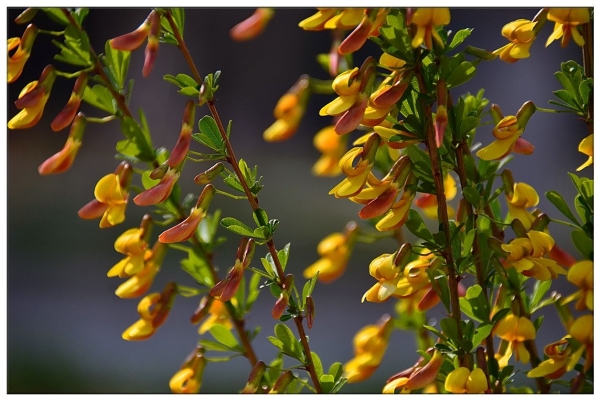Culture method of leek lotus
1. Soil
Leek lotus has strong adaptability to soil and is suitable to grow in sandy soil rich in humus.

two。 Temperature
Leek lotus likes the warm environment, the suitable temperature for its growth is 16-28 ℃, it is not hardy, and the winter temperature should not be lower than 5 ℃.
3. Light
Leek lotus like the sun, but also more resistant to semi-shade, long-term care in too shady environment will lead to non-flowering.
4. Moisture content
Leek lotus like wet and dry environment, afraid of waterlogging, pot planting plants can not have stagnant water, flowers withered to reduce watering.
Family culture method of leek lotus
The overall growth habits of leek lotus show a warm, moist and sunny environment. Not afraid of extreme heat, strong cold resistance. It is very convenient in family planting.
Temperature requirements of Chinese chive lotus culture
Leek lotus likes a warm environment. Generally speaking, it blossoms in September, the 6th month of each year.
The most suitable temperature for the growth of leek lotus is 16-28 ℃, which is not cold-resistant, and the overwintering temperature should not be lower than 5 ℃.
If the indoor can maintain more than 15 ℃ in winter, leek lotus can also continue to grow healthily. It can even blossom.
Light requirements of Chinese chive lotus culture
Leek lotus likes the sunny environment, if the growth environment is shady, then the quality of the seed balls will be poor.
Although the semi-shade can also blossom, but the number of flowers is small, the florescence is short.
Too much darkness may lead to non-flowering results.
Water requirement of Chinese chive lotus culture
Leek lotus likes the soil environment which is slightly dry, resistant to drought and afraid of waterlogging.
During the growing period, the soil should be dry and wet, and there must be no stagnant water. Reduce the amount of water after September, from November to February of the following spring, to ensure that it is dry and slightly moist.
Requirements of soil for cultivation of leek lotus
The most suitable soil for leek lotus should be sandy soil with good drainage and rich in humus.
However, the character of leek lotus is tenacious, and the requirement of soil in family breeding is not high. It can be adapted from slightly acidic to weakly alkaline soil, from sandy soil to light clay.
A layer of hard plastic foam or broken bricks can be placed at the bottom of the basin for ventilation and drainage.
Is leek lotus poisonous? how to raise leek lotus?
Is leek lotus poisonous?
Leek lotus is also known as wind and rain flowers, the leaves are somewhat like leeks, and the flowers are more beautiful. So, is leek lotus poisonous? Is it possible to breed indoors? Can I eat leek lotus?
Is leek lotus poisonous?
Is the leek lotus poisonous? The answer is no. Leek lotus itself has no toxicity, but also has a certain medicinal value, can be used as medicine, has the role of detoxification.
Can leek lotus be cultured indoors?
In fact, leek lotus is not toxic, then, indoor culture is also possible, and will not produce any greater harm.
But indoor breeding leek lotus, need to pay attention to, leek lotus itself prefer sufficient light growth environment, can withstand semi-shade. Sometimes the indoor light is not enough, if the light is not enough, it may make it grow poorly.
Therefore, when leek lotus is cultivated indoors, we need to pay attention to maintenance and management.
Can I eat leek lotus?
Leek lotus is not poisonous, then someone will want to know if this leek lotus can be eaten, so can leek lotus be eaten?
On this point, in fact, there is no clear answer, most tend to, leek lotus can be eaten, but think that the taste of leek lotus is not very good, unlike leeks, it is recommended not to eat more.
If you want to try leek lotus, you'd better ask a doctor or experienced people to avoid adverse reactions.
What about the withered and yellow leaves of leek lotus?
"Xiaobian, what if the leaves of our leek lotus turn yellow and dry?" In the face of such an urgent inquiry, the editor is also quick to code this short article. Don't say much, let's take a look.
The reason why the leaves of leek lotus turn yellow is that there is too much water.
Leek lotus is resistant to dry, but afraid of waterlogging, taboo stagnant water. If it is watered too much, the roots of leek lotus will be waterlogged, resulting in withered and yellow leaves.
Poor ventilation
Leek lotus likes a cooler environment and needs to maintain a certain degree of humidity.
If the weather is muggy, the room is too dry and the ventilation condition is poor, it is likely to affect its normal and healthy development.
Too much or lack of fertilizer
Although leek lotus has rough skin and thick meat, as a plant, its healthy growth also needs certain fertilizer nutrients. If there is too little or too much fertilizer, it may lead to the emergence of yellow leaves.
The solution to the withered and yellow leaves of leek lotus leaves to ensure a certain amount of moisture.
The newly transplanted leek lotus needs to be watered thoroughly at once, while the normal growth leek lotus should be dry and wet, not too much watering.
Moderate fertilization
Just like human growth and development, too much or too little nutrient intake will affect growth.
More natural humus should be added to the soil. Not chemical fertilizers.
Now we should generally know why the leaves of leek lotus in our family are withered and yellow. Then go and "save" this beautiful little plant!
Family culture method of leek lotus
Leek lotus is a kind of plant with many uses and strong character. So the question is, how to raise such a "casual" leek lotus at home? Let's take a look!
The overall growth habits of leek lotus show a warm, moist and sunny environment. Not afraid of extreme heat, strong cold resistance. It is very convenient in family planting.
Temperature requirements of Chinese chive lotus culture
Leek lotus likes a warm environment. Generally speaking, it blossoms in September, the 6th month of each year.
The most suitable temperature for the growth of leek lotus is 16-28 ℃, which is not cold-resistant, and the overwintering temperature should not be lower than 5 ℃.
If the indoor can maintain more than 15 ℃ in winter, leek lotus can also continue to grow healthily. It can even blossom.
Light requirements of Chinese chive lotus culture
Leek lotus likes the sunny environment, if the growth environment is shady, then the quality of the seed balls will be poor.
Although the semi-shade can also blossom, but the number of flowers is small, the florescence is short.
Too much darkness may lead to non-flowering results.
Water requirement of Chinese chive lotus culture
Leek lotus likes the soil environment which is slightly dry, resistant to drought and afraid of waterlogging.
During the growing period, the soil should be dry and wet, and there must be no stagnant water. Reduce the amount of water after September, from November to February of the following spring, to ensure that it is dry and slightly moist.
Requirements of soil for cultivation of leek lotus
The most suitable soil for leek lotus should be sandy soil with good drainage and rich in humus.
However, the character of leek lotus is tenacious, and the requirement of soil in family breeding is not high. It can be adapted from slightly acidic to weakly alkaline soil, from sandy soil to light clay.
A layer of hard plastic foam or broken bricks can be placed at the bottom of the basin for ventilation and drainage.
The method of hydroponic culture of leek lotus
As a typical bulbous plant, leek lotus can grow as long as the root has enough water. Although it avoids waterlogging, hydroponic cultivation is a completely different planting method, so as long as you pay more attention to it, leek lotus can also be hydroponized. Let's talk about the hydroponic culture method of leek lotus!
Leek lotus itself is mixed with pink or pure white florets in the green leaves, showing a fresh and elegant feeling as a whole. If it is hydroponically cultured, the spherical roots of leek lotus can be seen from the transparent container, and the leaves will be clearer.
One of the methods of hydroponic culture of leek lotus
Prepare a longer transparent container with a more beautiful appearance. A layer of colored stones or pebbles can be laid at the bottom of the container to add beauty.
In spring, first plant the prepared leek lotus bulbs in a basin. To ensure that the root system of leek lotus can be fully extended. Then the root is compacted with soil to ensure that the surface is smooth.
After that, put the basin in the pool, shake it gently, rinse off the surface soil, and put it into the selected container.
Don't have too much water in the container, 3/4 is fine.
The second method of hydroponic culture of leek lotus
In order to achieve a better ornamental effect, it is best to choose the appropriate equipment according to the plant variety, shape and so on. For leek lotus, transparent glass container is a good choice.
First, do a good job of removing the soil and washing the roots of the leek lotus, gently shake the dug-out plants with your hands, shake off the soil from the roots, and expose all the roots. Then rinse with clean water. There must be no dirt left.
After pruning the roots, stems and leaves, soak the roots, stems and leaves with 0.1% potassium permanganate solution for 10-15 minutes, then rinse with clean water, and then plant in the bottle.
This method of hydroponics requires the use of a special culture medium.
- Prev

Culture methods and matters needing attention of Qin Leaf Coral
1. The humid tropical plants like the high temperature environment, so it is best to maintain a temperature of 26-28 degrees. The temperature in this range is the most suitable temperature for the growth of the corals, but the corals are not hardy. You need to keep the temperature above 12 degrees through the winter.
- Next

The method of making Caragana bonsai
Generally choose to make bonsai Caragana cuttings or cuttings cultured into seedlings, because such branches are slender and soft, easy to cultivate into potted plants. Or choose graceful old piles for many years, which can achieve the effect of rapid prototyping. Try to dig up the plant of Caragana during dormancy or rainy season.
Related
- Fuxing push coffee new agricultural production and marketing class: lack of small-scale processing plants
- Jujube rice field leisure farm deep ploughing Yilan for five years to create a space for organic food and play
- Nongyu Farm-A trial of organic papaya for brave women with advanced technology
- Four points for attention in the prevention and control of diseases and insect pests of edible fungi
- How to add nutrient solution to Edible Fungi
- Is there any good way to control edible fungus mites?
- Open Inoculation Technology of Edible Fungi
- Is there any clever way to use fertilizer for edible fungus in winter?
- What agents are used to kill the pathogens of edible fungi in the mushroom shed?
- Rapid drying of Edible Fungi

